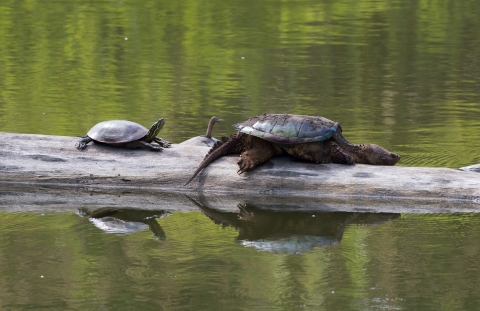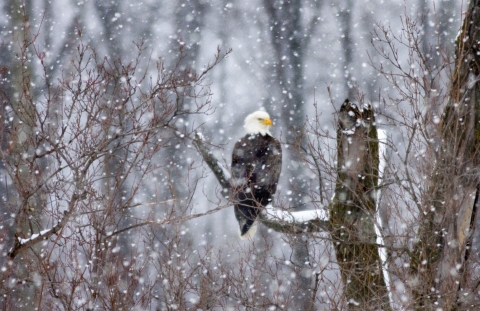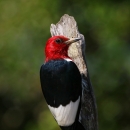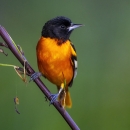Seasons of Wildlife
Spring:
In early spring (typically early March) waterfowl move through the refuge utilizing the chute and restored backwaters along the Missouri River. Along with the waterfowl, eagles also move through and head north. Resident bald eagles will begin nesting on the active eagles nest on the refuge. Later in the spring, shorebirds and spring songbirds utilize the restored chute, wetlands, prairies and bottomland forest habitats as a resting and refueling place during their migration. Turkeys can be heard attempting to attract their mates. The chorus of frogs can be heard on the first warm spring day. Spring is a great time to see a diversity of wildlife on the refuge.
Summer:
During the summer months look for wood duck broods as they learn how to swim on the refuge wetlands and along the chute. Great blue herons can be seen catching fish and other aquatic animals along the river and refuge waterways. Look for turtles sunning themselves on logs and sandbars along the chute edge. Fawns with their mothers can be seen grazing and frolicking. The best time to view wildlife in the summer heat is early in the morning or just before dusk in the evening.
Fall:
Fall marks the start of the migration. Neo-tropical migrants will move through the refuge on their way back to their wintering grounds in South America. In late fall the waterfowl and eagles start arriving back along the waterways and wetland on the refuge in search of food. Late October through early December are typically the months of peak waterfowl use.
Winter:
Bald eagle numbers typically peak on the refuge in December and again in late February. Look for eagles along the chute and along the Missouri River. Sparrows, cardinals, juncos, woodpeckers, chickadees and other wintering songbirds can be seen along the refuge roads and trails.
Featured Species
The diverse floodplain habitat at Boyer Chute National Wildlife provides an opportunity to view a wide range of wildlife. Along the restored chute and wetlands, look for a diversity of waterfowl and other water birds such as wood ducks, mallards, hooded mergansers, Canada geese, white-fronted geese, great blue herons, belted kingfishers and spotted sandpipers. Perched in trees along the waterways look for bald eagles, especially during the migration seasons.
Within the bottomland forest and grassland habitats look for both resident and migratory birds such as meadowlarks, yellow-rumped warblers, dickcissels, orioles, yellow warblers, and short-eared owls. The prairie and wetland restorations also benefit mammals such as white-tailed deer, beaver, muskrats, minks, coyotes, badgers and bats. Aquatic and upland habitats provide homes for reptiles and amphibians including northern prairie skinks, softshell turtles, ribbon snakes, Woodhouse’s toads and leopard frogs.
The diverse floodplain also provides suitable habitat for endangered species such as the pallid sturgeon. Side channels and chutes that allowed species like the pallid sturgeon places to feed, rest and reproduce have largely been eliminated in the modern, channelized Missouri River corridor. Areas like the restored chute and backwaters on the refuge provide the slow moving waters that pallid sturgeon need to reproduce and sustain their populations.












